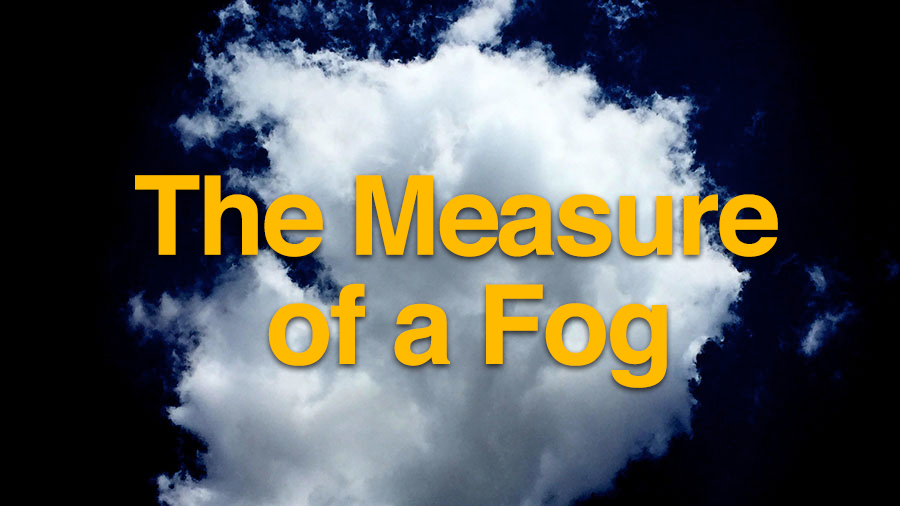The Measure of a Fog: Politics
When a climate agreement finally emerged from global talks in Paris at the end of 2015, it felt to many people like a bright light in the fog. After more than two decades of false starts, it appeared that 195 countries — all with varying and often competing economic and political interests — had managed to hammer out a realistic plan for curbing carbon emissions.

In this multi-part series, filmmaker Ian Cheney examines the scale of climate change, in all its many dimensions. Click the play button in the video above to view the short documentary.
In the most generous analysis, all of this was true, but it quickly became clear that the pact acquired the aura of success only in contrast to the drab, fruitless years of political stalemate that had come before it.
“The Paris agreement has no teeth,” notes Bina Venkataraman, director of global policy initiatives at the Broad Institute and a former climate policy adviser to President Obama. That sentiment echoes other criticisms of the agreement, which is grounded largely in ambitious promises, but with little effective mechanism for ensuring that signatories follow through. Such critiques are proving particularly apt as the United States — the world’s second-most prolific emitter of greenhouse gases, just after China — has signaled its intention under President Donald Trump to withdraw from the agreement entirely. Trump, for his part, has repeatedly denied the very existence of climate change.
And so, nearly 30 years after the founding of the United Nations’ Intergovernmental Panel on Climate Change, and a decade after that body shared a Nobel Peace Prize for its efforts, a truly binding international agreement on climate change remains elusive. Discouraging as that might seem, it’s also in some respects unsurprising. After all, as we’ve explored in a variety of ways in this series, climate change is a massive challenge — physically, technologically, psychologically, and of course, politically.
Part of the problem is that in democracies like the United States, politicians simply aren’t held accountable for long-term problems. Election cycles pop up every few years, so political leaders tend to focus on problems they think they can solve quickly, and yield dividends in the voting booth. Such an approach favors straightforward projects with tangible outcomes — infrastructure, job creation, defense. Working to curb emissions of a gas we cannot see, and to benefit generations yet unborn, is a much harder sell, in practical terms. Perhaps this helps to explain our fascination with geoengineering schemes that promise to knock global temperatures down a degree or two by blocking solar radiation; it’s progress you could point to.
Another wrinkle arises from the fact that, from the dawn of the Industrial Revolution right up through today, burning fossil fuels has been inextricably linked to economic development and growth. De-linking those two things might make sense from a global standpoint, but some political leaders — particularly in the developed world -— argue that unless every country commits, some international actors will continue fueling their economies on dirty but comparatively cheap fossil-based energy sources. On the flip side of that argument, of course, is a confounding question: Why shouldn’t poor nations be able to enjoy the benefits of cheap fossil fuels to build up their economies, raise living standards, and otherwise grow — just as the rich world has done for well over a century?
And finally, there’s that word “global” itself. Climate change might well be a global problem, but the planet is made up only of atomized nations whose interests are reflexively national. Until everyone agrees that cutting carbon is in their national interests, global political solutions will almost certainly remain out of reach.
In a seminal 1973 paper titled “Dilemmas in a General Theory of Planning” and published in the journal Policy Sciences, the academics Horst Rittel and Melvin M. Webber formally described what they dubbed “wicked” problems. “In a pluralistic society, there is nothing like the undisputable public good,” the authors wrote. “There is no objective definition of equity; policies that respond to social problems cannot be meaningfully correct or false; and it makes no sense to talk about ‘optional solutions’ to social problems unless severe qualifications are imposed first. Even worse, there are no ‘solutions’ in the sense of definitive and objective answers.”
It’s probably not surprising, then, that climate change has since been described by many stakeholders as the most wicked of wicked problems. Whether rising temperatures and swelling seas will reveal new avenues for political cooperation on the problem is a fair question — but we’re not there yet.


Comments are automatically closed one year after article publication. Archived comments are below.
There are no handbooks, no guides for how to manage a crashing civilization. Those kinds of documents are not preserved. Common sense holds that our goal should be to maintain a civil and peaceful world as long as possible.
Anti-government wack jobs, only hasten the fracturing of nations, moving toward the return of the city state, and feudal governments. Is democracy vitally important? Or is it impossible to sustain?